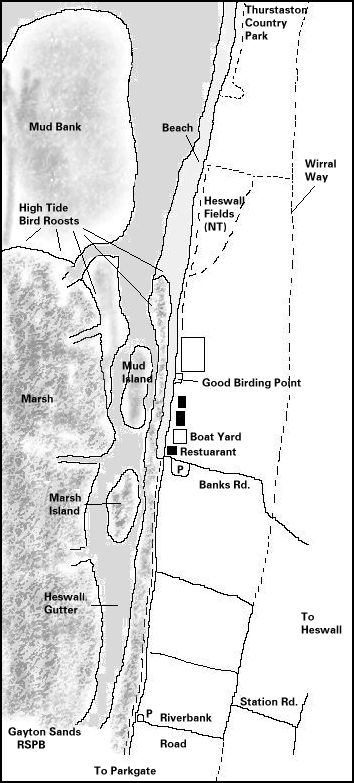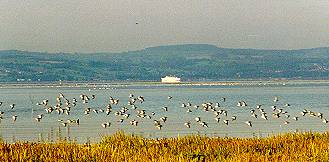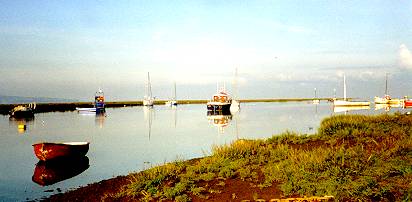
Scale: Map is approximately 3 kilometres/2 miles top to bottom.
The spot marked 'Good Birding Point' is the location where the observer is sitting in the above narrative. It is a flat grassy area on top of a five foot sea wall, ideal for placing telescopes and also giving some elevation to enable better bird observations.
The two islands shown, marsh island and mud island - my own nomenclature, have been highlighted as birds tend to congregate here as the tide comes in. Another place where the birds congregate is the channels going into the marsh. Here large numbers of Teal and Redshank should be seen.
Of course the amount of mud and marsh exposed depends very much on the height of the tide, the map shows the situation about two hours before an average high tide. The mud bank shown on the map is particularly attractive to Shelduck, many hundreds are usually present at all states of the tide.


